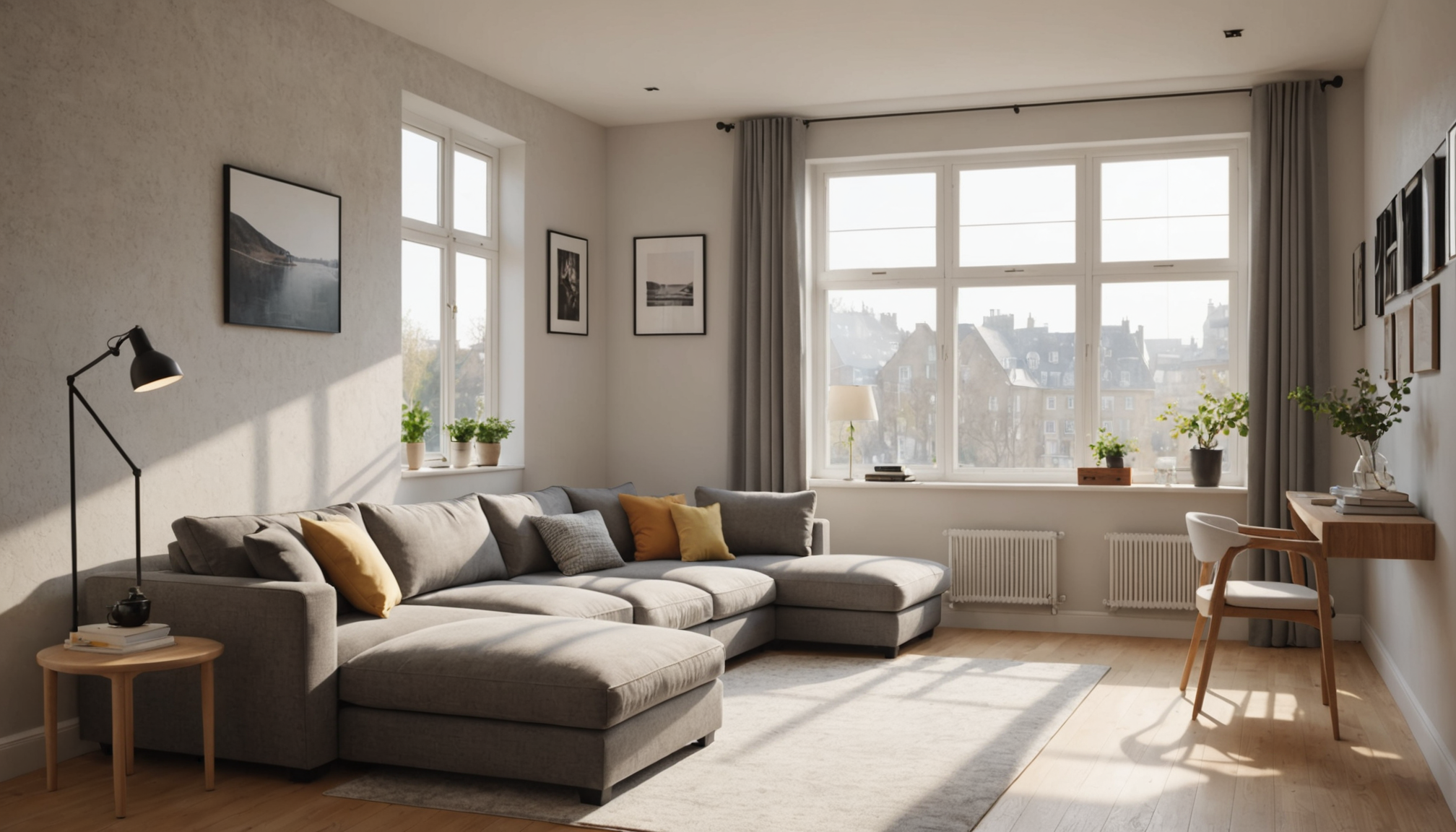When considering the cost of carpet and upholstery cleaning, several factors can significantly influence the final price of these home services. Understanding these factors helps you prepare and budget accordingly, ensuring you receive the maximum value from the cleaning service.
One of the primary determinants is the size of the area that needs to be cleaned. Larger areas will naturally demand more time and effort, which increases the cost. For instance, cleaning extensive carpeted floors as opposed to a small room or a single sectional sofa can lead to substantial differences in pricing.
The type and condition of the materials also play a crucial role. Different carpet fibers and upholstery fabrics require specific cleaning methods. Delicate or specialty materials, like silk or wool, may require more advanced techniques and products, thus raising the cost of these cleaning procedures. Additionally, heavily soiled or stained carpets and upholstery require more intensive treatment, which can also add to the overall expense.
The location of the service provider can affect pricing as well. Metropolitan or urban areas often have a higher price range compared to rural locations due to the varying cost of living and operational expenses in different regions. Moreover, local demand and competition can influence the rates charged by cleaning vendors.
Another important factor is the method of cleaning employed. Common techniques include steam cleaning, dry cleaning, and shampooing, each with different pricing structures. Steam cleaning, known for its deep penetration and effective stain removal, might cost more than other methods because of the advanced equipment and training required to perform it safely and efficiently.
Additionally, the choice between professional cleaning services and DIY approaches can also impact costs. While DIY solutions might save money upfront, they often require renting or purchasing equipment and cleaning agents, not to mention the learning curve and time investment involved. Professional services, on the other hand, offer expertise and efficiency that might justify the higher expenditure for many homeowners.
To provide a clearer picture, here is a table comparing different influences on cleaning costs:
| Factor | Impact on Cost |
| Size of Area | Larger areas result in higher costs due to increased labor and time. |
| Material Type | Specialty fabrics like wool or silk require costlier, specialized cleaning. |
| Condition/Soiling Level | Heavily soiled items necessitate more intensive cleaning, increasing cost. |
| Location | Urban areas tend to charge more due to higher operation costs and demand. |
| Cleaning Method | Advanced methods like steam cleaning cost more than basic techniques. |
| Professional vs. DIY | DIY might save initial costs but could be less effective without expertise. |
By factoring in these aspects, you can better anticipate the investment required and select a cleaning strategy that aligns with your budget and needs. This understanding is essential for making informed decisions and ensuring that your carpeting and upholstery remain in optimal condition while managing expenses effectively.
Average price breakdowns
When discussing the expenditures associated with carpet and upholstery cleaning, it’s useful to break down the average price ranges you might encounter for these home services. Recognizing these benchmarks will help you plan your budget and avoid unexpected costs.
1. Carpet Cleaning Costs:
- Per Room Pricing: Most cleaning services offer per-room pricing for carpet cleaning, typically ranging from $25 to $75 per room. This approach is straightforward and lets you easily estimate the cost based on the number of rooms you need cleaned.
- Square Footage Pricing: Some providers charge by the square foot, usually between $0.20 and $0.50 per square foot. This method is often applied in larger spaces, offering scalability and potentially cost savings if you have extensive areas to clean.
- Minimum Charges: Many services have a minimum charge, which often lies between $80 and $150. This ensures their travel and labor costs are covered, even if they are only cleaning a small area.
- Stairways: Cleaning stairs is typically charged separately, often costing between $2 and $5 per step, due to the additional labor involved.
2. Upholstery Cleaning Costs:
- Sofa and Couch Cleaning: Fees for cleaning upholstery on sofas and couches can vary considerably based on size and material. Basic couches might cost between $50 and $200 to clean, depending on the method used and the condition of the furniture.
- Chair and Ottoman Cleaning: Smaller pieces like armchairs and ottomans usually cost between $30 and $70. Specialty furniture or heavily stained items might be higher.
- Material Influences: Delicate or unique materials such as leather can increase the cost. Leather cleaning often involves specialized products and techniques, with pricing ranging from $100 to $300 per item.
3. Additional Considerations:
- Stain and Odor Removal: Specific treatments for pet stains, odors, or heavy soiling can add $40 to $100 per area to your bill, as they necessitate specific chemicals and expertise from the cleaning service.
- Protective Treatments: After a cleaning, many homeowners opt for protective treatments like Scotchgard to extend the life of their carpets and upholstery, commonly adding $10 to $30 per item.
- Discount Packages: Many providers offer discounts when combining services, such as carpet and upholstery cleaning packages that might lower the overall cost. Always inquire about available deals.
Understanding these average cost ranges can help you better navigate the services offered by various cleaning professionals. It equips you with the knowledge needed to evaluate estimates, select the most budget-friendly options, and ensure the quote aligns with what you expect to spend on maintaining your home’s cleanliness and comfort.
Differences between professional and DIY cleaning
Choosing between professional carpet and upholstery cleaning services and a DIY approach involves weighing several important factors. Each option has its unique advantages and potential drawbacks. However, understanding these differences can aid in deciding which method best fits your needs, budget, and desired cleaning outcomes.
Opting for professional cleaning services often means benefitting from significant expertise. Professionals in this field are trained to handle different types of fabrics and carpets, including those that require specialized cleaning techniques. This expertise ensures a thorough and effective cleaning process, potentially restoring your carpets and upholstery to like-new condition. Professional cleaners have access to industrial-grade equipment and high-quality cleaning solutions that might not be available to the average consumer. Such equipment can extract deeply embedded dirt, allergens, and mites, offering a level of cleanliness that is tough to achieve with typical over-the-counter products or rental machines.
Moreover, utilizing professional services often translates into time savings. When cleaning carpets and upholstery yourself, considerable time is spent not only performing the cleaning but also researching and acquiring the right products and understanding the cleaning techniques suitable for your materials. Professionals complete these tasks quickly and efficiently, freeing you up for other activities. Convenience is a substantial benefit, especially for those with busy lifestyles.
In contrast, a DIY approach is attractive for those seeking to curtail costs. By cleaning carpets and upholstery yourself, you save on service fees, which can range significantly based on the size of the area and the condition of the materials. For DIY cleaning, one might only need to cover the cost of renting equipment and purchasing cleaning agents, assuming one is willing to invest the necessary time and effort. Additionally, DIY cleaning gives homeowners the flexibility to target specific areas as needed, without scheduling constraints associated with hiring a service.
However, while DIY methods might save you money upfront, there are potential downsides. The lack of professional expertise can lead to less effective cleaning, especially when dealing with stubborn stains or odors. There is also a risk of damaging delicate fibers or materials due to improper technique or inappropriate products, which could lead to higher expenses for repairs or replacements in the long run. Moreover, rented equipment might not perform as well as commercial-grade machines used by professionals, thereby impacting the quality of the cleaning.
Ultimately, when considering carpet cleaning and upholstery upkeep, the decision between professional and DIY often comes down to balancing cost with the level of cleaning desired. If pristine results with minimal effort are your priority, professional services likely present the better option. However, if budget constraints are more pressing and you’re prepared to put in a bit more labor, a DIY approach could adequately meet your cleaning needs. Understanding these differences ensures you make an informed decision while maintaining the longevity and appearance of your home’s assets.
Additional services and their costs
When delving into the realm of carpet cleaning and upholstery care, it’s important to recognize that a variety of additional services can complement basic cleaning, potentially enhancing the cleanliness and longevity of your home furnishings. These supplementary options, while elevating the overall cleaning experience, have associated costs that homeowners should consider when planning their budgets.
Stain and odor removal is a common service often paired with basic carpet cleaning. Handling stubborn stains from coffee, wine, or pet accidents requires specialized attention and products that go beyond typical cleaning solutions. This type of removal involves a tailored application of professional-grade cleaning agents, usually costing an additional $40 to $100 per treated area. The focus on eliminating both visible stains and underlying odors ensures that carpets and upholstery are refreshingly clean and free from unpleasant smells.
Another enhancement to routine cleaning is the application of protective treatments. Products like Scotchgard provide a shield against future spills and stains, making your carpets and upholstery more resilient. Opting for this service typically adds between $10 and $30 per item to your bill. This proactive measure is a wise investment for preserving the appearance and functionality of your carpets and fabrics over time, substantially reducing maintenance costs down the line.
For those with intricate area rugs or expensive furniture, professional companies often offer specialty cleaning services tailored to delicate materials. This might include hand-washing or use of gentle, yet effective, cleaning agents specifically designed for sensitive fibers. Services focusing on materials like silk or high-end wool can incur additional charges due to their complexity, with costs varying based on the rug’s size and condition.
Pet owners may find regular cleaning insufficient to tackle deeply embedded pet hair and dander. To address this, some specialists provide services specifically designed to remove these allergens effectively from both carpets and upholstery. This can be particularly beneficial for allergy sufferers and families wishing to maintain a healthier home environment, albeit with an added expense.
For homeowners keen on revitalizing their living spaces, some cleaning companies offer comprehensive packages that combine various services at a discounted rate. These packages might integrate carpet, upholstery, and curtain cleaning, or include additional features like deodorizing and anti-static treatments. While these packages can vary greatly in price, they often present a cost-effective option for extensive home cleaning needs.
In summary, while standard carpet and upholstery cleaning forms the foundation of maintaining a welcoming home environment, additional services can significantly enhance the results. By incorporating these options, you can achieve a deeper, more comprehensive clean that addresses specific needs such as stain protection or allergen removal. To explore a wide range of service offerings and find the right providers for your needs, consider visiting LocallyFind.com, where you can connect with trusted home service professionals in your area.
Tips for saving on cleaning services
If you’re looking to reduce carpet cleaning or upholstery costs without compromising on quality, there are several strategies that can be employed. One effective method is to schedule regular maintenance cleanings. Professionals recommend periodic cleaning to prevent dirt and stains from embedding deeply into the fibers, which ultimately makes the cleaning process more labor-intensive and expensive. By keeping up with regular at-home maintenance and promptly treating spills and stains as they happen, you can extend the intervals between professional cleanings.
Researching and comparing various providers in your area is another savvy move. Look for companies offering specials or discounts on their cleaning services. Many businesses provide seasonal promotions or discounts for new customers. It’s also worth asking if they offer package deals or discounts for combining carpet cleaning with other cleaning services, such as upholstery or drapery cleaning.
For those whose schedules are flexible, consider booking your cleaning service during off-peak times when companies are less busy. Some providers offer reduced rates for weekday appointments or during months when demand is low. Additionally, joining loyalty programs or subscribing to newsletters might provide access to exclusive deals that could cut cleaning expenses.
When evaluating potential cleaning services, don’t overlook the opportunity to negotiate. Some companies may be willing to adjust their rates, especially if you have multiple jobs or can guarantee repeat business. It’s also useful to ask for a written quote to compare with others, ensuring you receive the best value for the services you need.
Lastly, if you’re confident in handling certain aspects of cleaning on your own, consider a hybrid approach. For example, you might rent equipment to manage minor upholstery tasks yourself while leaving more challenging or sensitive jobs to professionals. This approach allows for substantial savings, though it’s important to weigh the time investment against the potential to achieve professional-grade results.
In the pursuit of clean carpets and upholstery, being proactive and informed will serve you well. Whether it’s finding the right balance between professional and DIY solutions or leveraging discounts and promotions, these tips can help you maintain your home affordably and effectively.


